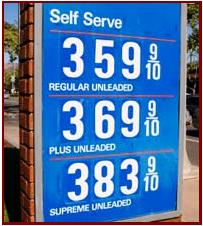
The 16-billion gallon cellulosic target appears laughable – EPA projected last year that less than 18 million gallons of the fuel would be available in 2011. Now it says less than 13 million gallons will be available this year.
The U.S. Environmental Protection Agency (EPA) today proposed the 2012 percentage standards for four fuel categories that are part of the agency’s Renewable Fuel Standard program known as RFS2.
The controversial Energy Independence and Security Act of 2007 (EISA) established annual renewable fuel volume targets, reaching an overall level of 36 billion gallons in 2022 – 16 billion gallons of cellulosic biofuels; 15 billion gallons annually of conventional biofuels; 4 billion gallons of advanced biofuels; and 1 billion gallons of biomass-based diesel.
For 2012, EPA is proposing to meet EISA’s requirement to blend more than 1.25 billion gallons of renewable fuels over the amount mandated for 2011, but it’s doing that largely with ethanol, which has already cost taxpayers more than $40 billion in subsidies.
Thus far taxpayers have little to show for the billions doled out to special interests, as energy is neither independent nor secure in the U.S. Oil imports peaked in 2005 at 420 million barrels, and have remained below that level as the ongoing Great Recession took hold in 2008.
U.S., energy tycoon T. Boone Pickens claims that based on the latest figures from the Federal Reserve Economic Database, the U.S. imported 62% of its oil, or 362 million barrels in May 2011, sending approximately $41.7 billion – $934,357.63 per minute- to foreign countries.
To achieve EISA volumes, EPA calculates a percentage-based standard for the following year. Based on the standard, each refiner, importer, and non-oxygenate blender of gasoline or diesel determines the minimum volume of renewable fuel that it must ensure is used in its transportation fuel. It’s a government dictated plan not a market-based solution.
When the U.S. Environmental Protection Agency (EPA) last summer proposed the 2011 percentage standards for the four fuel categories of the Renewable Fuel Standard program that must make up 7.95% of total gasoline sales by regulation, it set the targets below the Congressional mandate based on what looked to be a realistic assessment of actual demand at the time as the Great Recession dragged on. It’s doing it again this year.
The proposed 2012 overall volumes and standards are:
- Biomass-based diesel (1.0 billion gallons; 0.91%)
- Advanced biofuels (2.0 billion gallons; 1.21%)
- Cellulosic biofuels (3.45 – 12.9 million gallons; 0.002 – 0.010%)
- Total renewable fuels (15.2 billion gallons; 9.21%)
EPA is once again proposing a 2012 cellulosic volume that is lower than the EISA target for 2012 of 500 million gallons. EPA said it will continue to “evaluate the market” as it works to finalize the cellulosic standard in the coming months.
The 16-billion gallon cellulosic target appears laughable – EPA projected last year that less than 18 million gallons of the fuel would be available. Now it says next year less than 13 million gallons will be available.
The bulk of the program is comprised of ethanol production that is heavily subsidized, while imports of less expensive, more efficient sugar cane versions are effectively blocked by taxes. Currently U.S. taxpayers are handing agribusiness a subsidy of about $7 billion annually to use corn to make ethanol, according to the Congressional Budget Office.
Blenders of fuels receive a tax credit of 45 cents for each gallon of ethanol (regardless of the feedstock or raw material) that is combined with gasoline and sold. Although the credit is provided to blenders, most of it goes to producers of ethanol and to the farmers who grow the corn–in the form of higher prices received for their products because of the artificial, government dictated demand.
Critics of the subsidy say, correctly, that virtually all of the ethanol used in the U.S. comes from corn, thereby raising the price of food. Producing ethanol from corn is also energy intensive, thereby increasing greenhouse gas emissions. Ethanol fuel also has less energy density than gasoline, meaning mileage reductions of up to 25% are possible for E85.
As the implications of the act continue to unfold, critics call it a needless subsidy for agribusiness, one that takes food out of production. Hence the push for cellulosic since it can in theory be made from non-agricultural crops on land not in food production. It’s a theory in search of marketplace confirmation.
Mandating demand for products that don’t yet exist, haven’t been proven commercially viable or are not cost effective is the height of U.S. Congressional folly, in their view. Also, a fierce debate is underway about how much some of these fuels actually reduce greenhouse gas emissions.
In addition, EPA is proposing a volume requirement of 1.28 billion gallons for biomass-based diesel for 2013. EISA specifies a one billion gallon minimum volume requirement for that category for 2013 and beyond, but enables EPA to increase the volume requirement. (See U.S. Oil Imports Declining Since 2005 Peak. It’s Not All Good and Pork Update – USDA and DOE Award $47 Million in Taxpayer Dollars for Biomass Research to Special Interests and Taxpayer Subsidized Ethanol Caught in Partisan Budget Battle)

